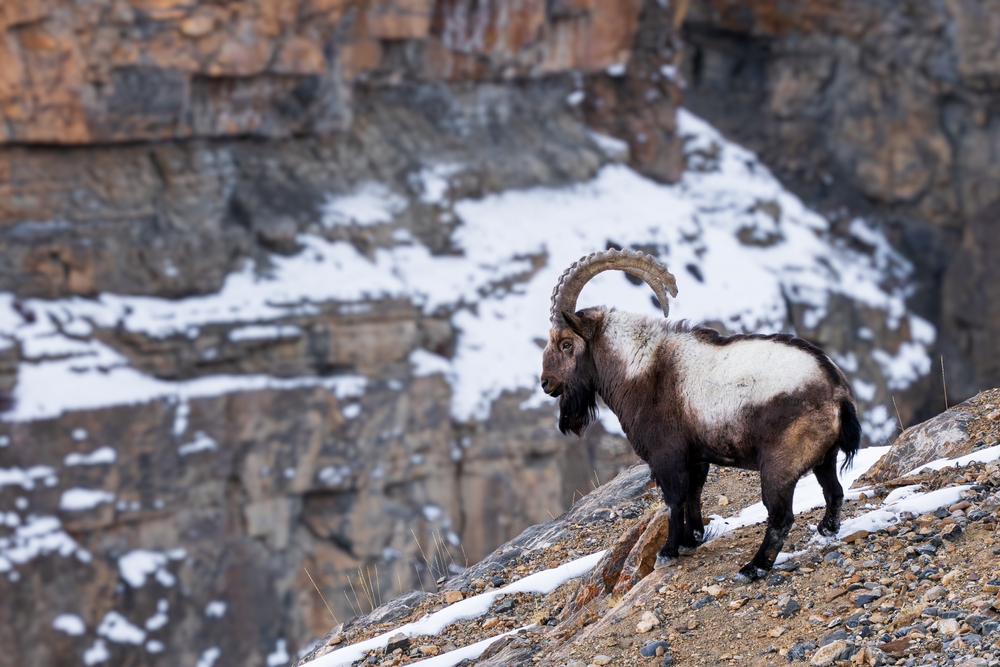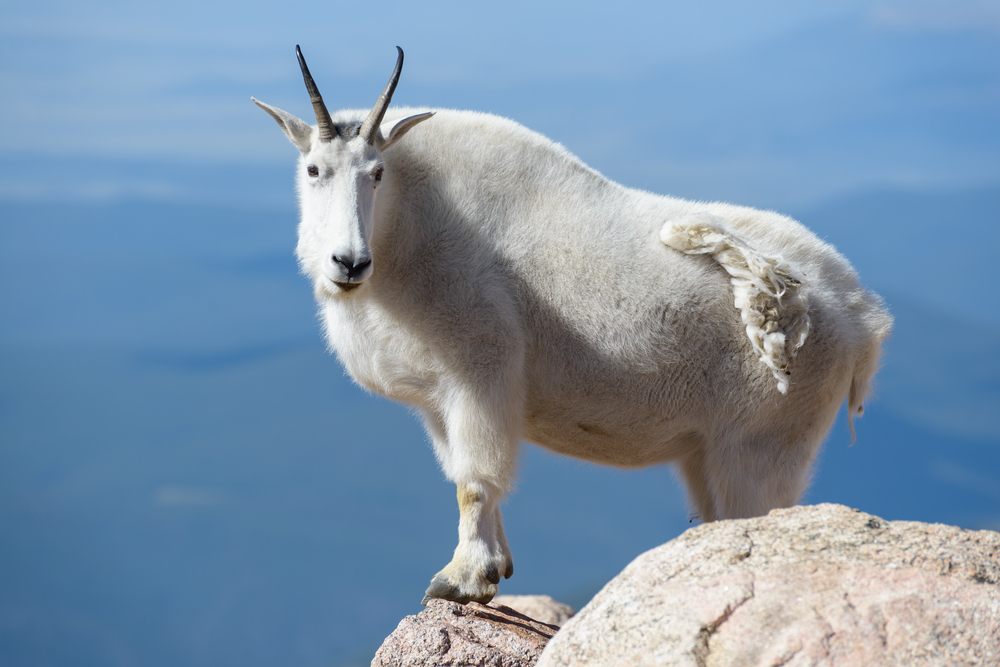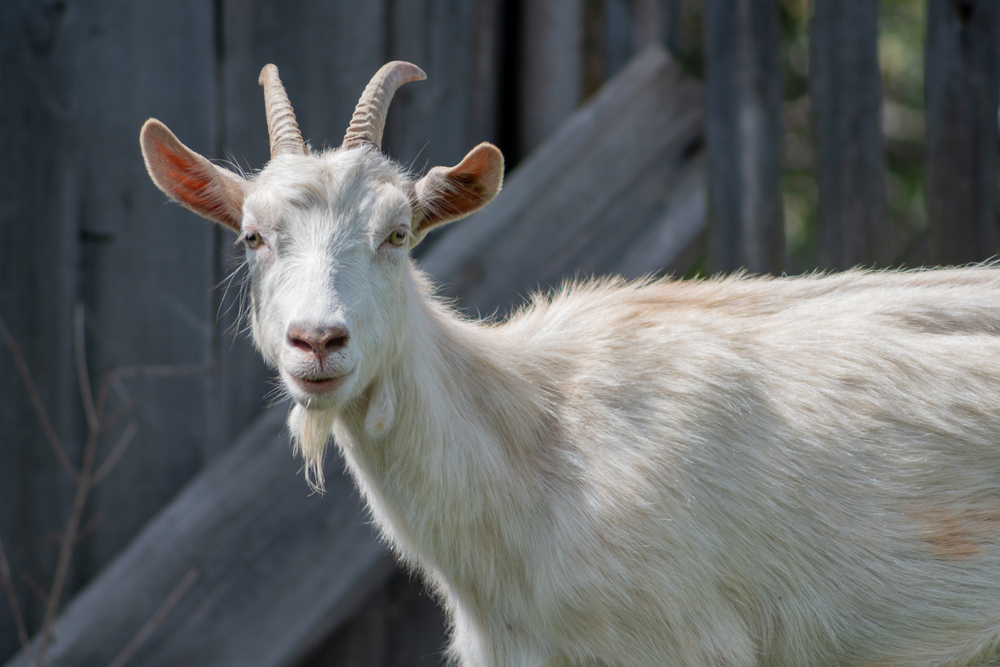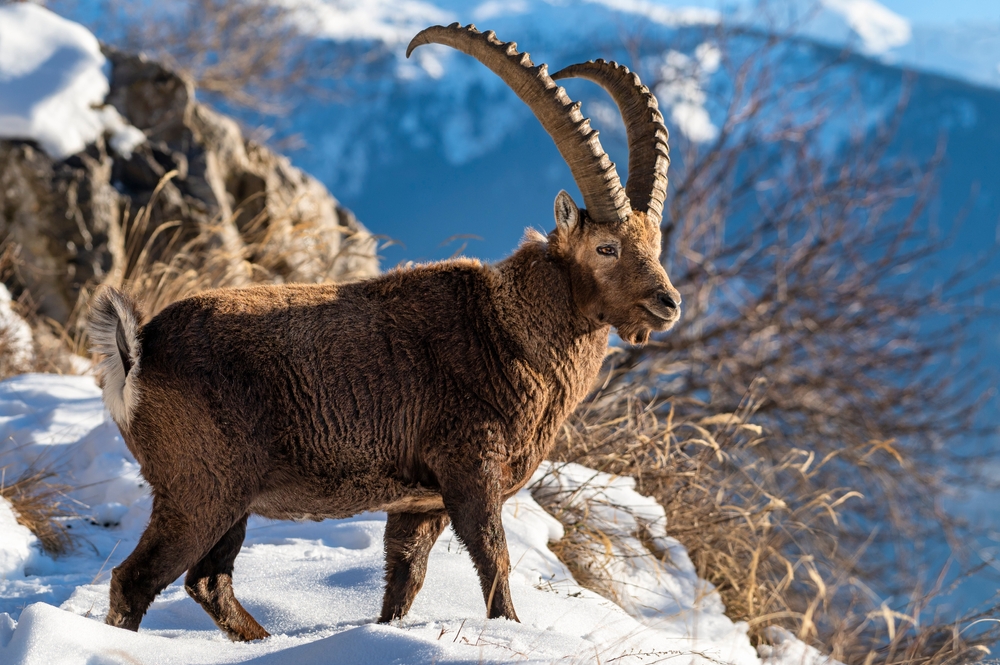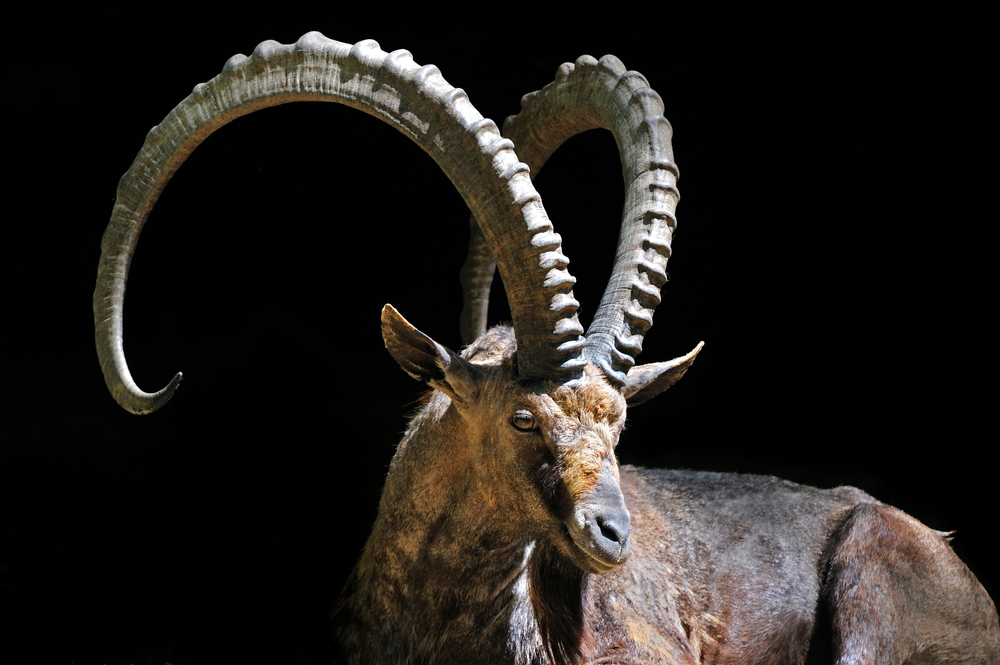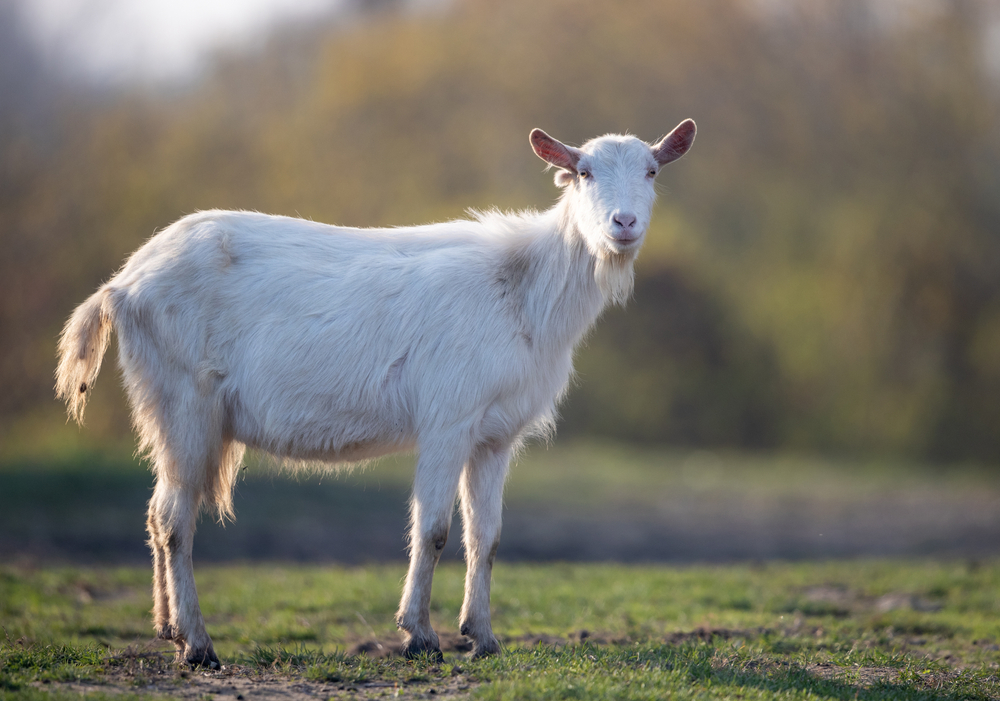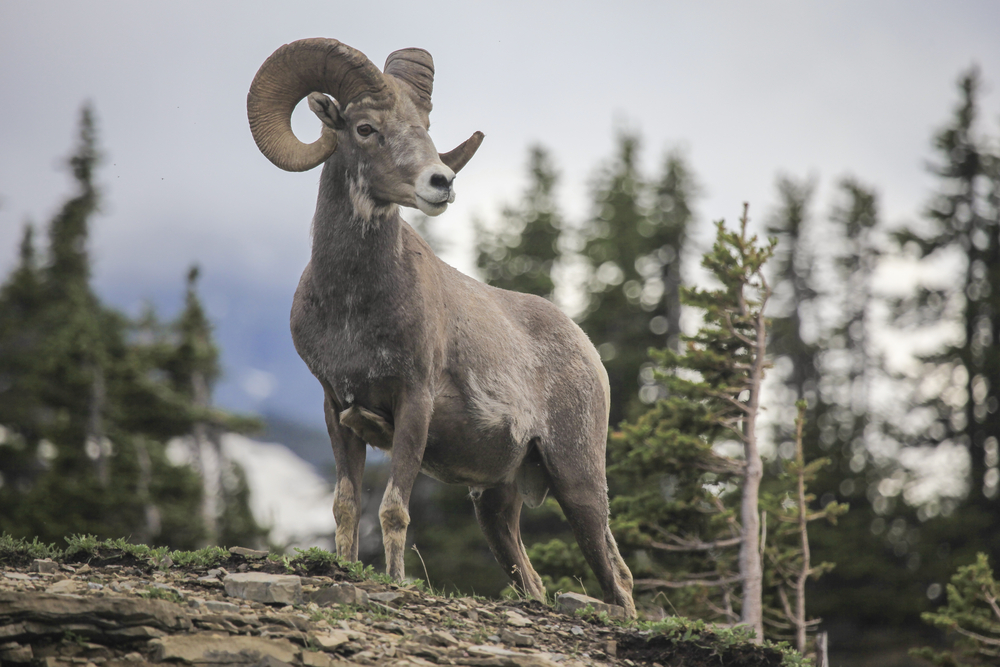The Siberian ibex (Capra sibirica) is most closely related to other ibex species in the genus Capra, especially the Alpine ibex (Capra ibex) and the Nubian ibex (Capra nubiana). Genetic studies suggest it shares a common ancestor with the domestic goat (Capra hircus) through the wild bezoar ibex (Capra aegagrus).
About
The Siberian ibex (Capra sibirica) is a rugged wild goat species native to the mountainous regions of Central and northern Asia. It belongs to the family Bovidae, which also includes antelope, cattle, sheep, and domestic goats. Distributed across Russia, Mongolia, Kazakhstan, Kyrgyzstan, Tajikistan, Afghanistan, Pakistan, and China, the Siberian ibex is one of the largest members of the ibex group, thriving in elevations from 500 to over 5,000 meters (1,640–16,400 feet).
Males (billies) are significantly larger than females (nannies), weighing 60–130 kg (132–287 lbs) compared to 35–56 kg (77–123 lbs) for females. They are most famous for their massive, backward-curving horns, which in males can grow up to 115–148 cm (45–58 inches) in length, with pronounced ridges along the outer curve. Females have much shorter, thinner horns. Their coat is thick and varies seasonally—reddish-brown in summer and longer, paler, and shaggier in winter—providing insulation against the extreme cold of their alpine habitat.
Siberian ibexes are superb climbers, using their split hooves and rough pads to navigate steep cliffs and rocky escarpments where predators struggle to follow. Their diet includes alpine grasses, herbs, mosses, and lichens in summer, shifting to woody plants, twigs, and bark in winter when snow covers high pastures.
Socially, females and young form small herds, while males live solitarily or in bachelor groups outside the rutting season. The mating season occurs in late autumn to early winter, during which males engage in horn-clashing battles for dominance. Kids are born in late spring or early summer, timed with the availability of fresh vegetation.
While widespread, the Siberian ibex faces threats from poaching, habitat loss, and competition with domestic livestock. Conservation measures, including hunting restrictions and protected areas, help sustain populations across much of their range.
Physical Characteristics
The Siberian ibex (Capra sibirica) is a large, rugged wild goat adapted to the cold, mountainous regions of Central and Northern Asia:
-
Coat: Thick, dense coat that varies in color seasonally—light brown to sandy in summer, becoming darker and denser in winter for insulation. The underparts and inside of the legs are lighter, often whitish.
-
Head: Long, narrow face with a straight profile and short, pointed ears.
-
Horns: Both sexes have horns, but males’ are massive, ridged, and backward-curving, reaching up to 55 in (140 cm) in length. Females’ horns are much shorter, slender, and less curved.
-
Body: Strong, muscular build with a deep chest, sturdy neck, and well-developed shoulders and hindquarters for climbing and jumping on steep slopes.
-
Legs: Long, powerful legs with cloven hooves and rough, rubbery pads for grip on rock and ice.
-
Tail: Short and tufted, usually darker in color.
Size:
-
Length (Body): Approximately 4.3 to 5.2 ft (1.3 to 1.6 m) from head to rump.
-
Shoulder Height: Around 2.6 to 3.3 ft (0.8 to 1.0 m).
Weight:
-
Adult Female: Typically 90 to 150 lbs (40 to 68 kg).
-
Adult Male: Usually 180 to 270 lbs (82 to 123 kg), with exceptionally large males exceeding this.
The Siberian ibex’s large body, massive horns, and thick seasonal coat make it well-suited to life in high-altitude, cold, and rugged mountain ranges.
Reproduction
The Siberian ibex has a seasonal breeding cycle adapted to the extreme climates of its high-altitude range, ensuring kids are born during the most favorable time of year:
-
Mating and Breeding Season:
-
Breeding occurs during the rut in late fall to early winter (November to January).
-
Males compete intensely for access to females, engaging in horn-clashing battles and dominance displays.
-
-
Gestation:
-
The gestation period lasts about 170 to 180 days (approximately 5.5 to 6 months).
-
-
Birth and Kidding:
-
Most births occur in late spring to early summer (May to June), when alpine pastures are lush and temperatures are milder.
-
Usually a single kid is born; twins are rare.
-
-
Kid Characteristics at Birth:
-
Newborns weigh about 6 to 9 lbs (2.7 to 4.1 kg).
-
Precocial—able to stand and follow their mother within hours, an essential adaptation in predator-rich, rugged terrain.
-
-
Maternal Care:
-
Females give birth on secluded cliff ledges or rocky outcrops to avoid predators.
-
Kids nurse for 4 to 6 months, gradually adding vegetation to their diet after the first few weeks.
-
-
Maturity and Breeding Readiness:
-
Females reach sexual maturity at 2 to 3 years.
-
Males are sexually mature by 3 years but usually don’t breed successfully until 5 to 6 years, when they are strong enough to win dominance contests.
-
The Siberian ibex’s timed birthing, protective cliffside nurseries, and strong maternal care help maximize survival in harsh alpine and subalpine environments.
Lifespan
In the Wild:
Siberian ibex typically live 12 to 16 years, with females generally outliving males. Males face higher mortality due to rut-related stress, competition, and injuries.
In Captivity:
With veterinary care, steady food supply, and protection from predators, they can live up to 18–20 years.
Threats to Longevity:
-
Predation: Snow leopards, wolves, lynx, and large birds of prey (for kids) are major predators.
-
Environmental Stress: Harsh winters, deep snow, and food scarcity can reduce survival rates, especially for older or weaker animals.
-
Rut-Related Injuries: Males often sustain horn or body injuries during intense breeding season battles.
-
Disease & Parasites: Internal parasites and respiratory diseases can weaken individuals, particularly in high-density populations.
-
Human Impact: Hunting for horns and meat, as well as habitat loss, can shorten lifespan in certain regions.
The Siberian ibex’s adaptations for cold, rugged environments allow it to live a relatively long life for a wild mountain ungulate, though environmental extremes and predator pressure are constant challenges.
Eating Habits
The Siberian ibex is a herbivorous grazer and browser, adapted to the limited and seasonal vegetation of its mountainous habitat:
-
Primary Diet:
-
Summer: Grazes on alpine and subalpine meadow grasses, sedges, herbs, and clover.
-
Spring: Feeds on new shoots, buds, and leaves emerging after snowmelt.
-
Autumn: Consumes a mix of grasses, forbs, and shrub leaves to build fat reserves for winter.
-
Winter: Survives on woody browse, dry grasses, mosses, and lichens exposed by digging through snow.
-
-
Foraging Behavior:
-
Moves seasonally between high-elevation summer pastures and lower slopes in winter to find accessible forage.
-
Often grazes in the early morning and late afternoon, resting in shaded or sheltered areas during the heat of the day or in poor weather.
-
-
Digestive Adaptations:
-
As a ruminant, has a four-chambered stomach that ferments fibrous vegetation, enabling extraction of nutrients from coarse, low-quality forage.
-
-
Water Needs:
-
Obtains most of its moisture from plants and snow, but drinks from streams or meltwater pools when available.
-
The Siberian ibex’s flexible, seasonal feeding strategy allows it to survive in environments where plant growth is short-lived and winters are long and harsh.
Uniqueness
The Siberian ibex (Capra sibirica) is one of the largest and most cold-adapted wild goats in the world, with a set of traits that distinguish it from other ibex species:
-
Massive Horns: Males grow some of the longest horns of any wild goat, reaching over 55 in (140 cm) in length, with deep ridges and a sweeping backward curve.
-
Extreme Cold Adaptation: Dense, seasonally changing coat and robust body mass allow survival in temperatures well below freezing and at elevations above 16,000 ft (4,900 m).
-
Wide Range: Occupies one of the largest distributions of any ibex species, from the Altai Mountains of Russia and Mongolia to the Hindu Kush and Himalayas.
-
Steep Terrain Specialist: Agile climber capable of navigating sheer cliffs, rocky ridges, and snow-covered slopes to avoid predators and reach forage.
-
Seasonal Migration: Moves between high-altitude summer pastures and lower winter ranges, sometimes traveling long distances.
-
Key Prey Species: Plays a crucial ecological role as a primary food source for endangered snow leopards in Central Asia.
-
Cultural Significance: Featured in traditional art, folklore, and hunting heritage throughout Central Asia.
The Siberian ibex’s combination of size, horn length, cold tolerance, and vast range makes it a flagship species of the high Asian mountain ecosystems.
Be the First to Share Photos of This Species.
FAQ’s
1. What is the closest species to the Siberian ibex?
2. How does the Siberian ibex compare to other goat species?
The Siberian ibex is larger, more cold-adapted, and longer-horned than most ibex species. Compared to the Alpine ibex, it is more robust, has a wider range, and endures more extreme temperatures. Compared to the Nubian ibex, it is heavier, thicker-coated, and adapted to snowy, high-altitude environments rather than hot, arid mountains.
3. What national parks provide the best chances to see a Siberian ibex?
Siberian ibex can be seen in protected areas across Central and Northern Asia, including:
-
Altai Tavan Bogd National Park (Mongolia) – rugged alpine terrain in the Altai Mountains.
-
Snow Leopard National Park (India) – high-altitude habitat shared with snow leopards.
-
Sayano-Shushenski Nature Reserve (Russia) – remote mountain ecosystems with stable ibex populations.



































































